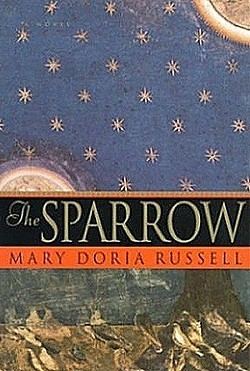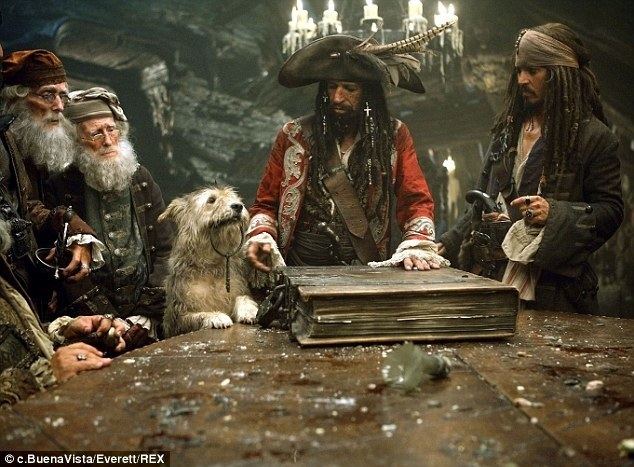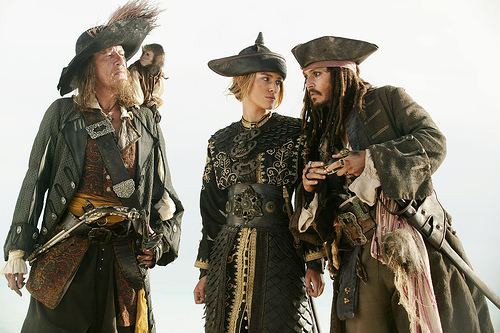The Sparrow (novel)
6 /10 1 Votes6
Country United States | Language English | |||||||||||||||||||||||||||||||||
 | ||||||||||||||||||||||||||||||||||
The Sparrow (1996) is the first novel by author Mary Doria Russell. It won the Arthur C. Clarke Award, James Tiptree, Jr. Award, Kurd-Laswitz-Preis and the British Science Fiction Association Award. It was followed by a sequel, Children of God, in 1998. The title refers to Matthew 10:29-31, which relates that not even a sparrow falls to the earth without Gods knowing of it.
Contents
Plot summary

The novel begins in the year 2019, when the SETI program, at the Arecibo Observatory, picks up radio broadcasts of music from the vicinity of Alpha Centauri. The first expedition to Rakhat, the world that is sending the music, is organized by the Jesuit order, known for its missionary, linguistic and scientific activities since the time of its founder Ignatius Loyola.

Only one of the crew, Father Emilio Sandoz, a priest, survives to return to Earth, and he is damaged physically and psychologically. The story is told in framed flashback, with chapters alternating between the story of the expedition and the story of Sandoz interrogation by the Jesuit orders inquest, set up in 2059 to find the truth. Sandoz return has sparked great controversy – not just because the Jesuits sent the mission independent of United Nations oversight, but also because the mission ended disastrously. Contact with the UN mission, which sent Sandoz back to Earth alone in the Jesuit ship, has since been lost.
From the beginning, Sandoz, a talented Puerto Rican linguist, who is described as of mixed Taino and Conquistador heritage and character, born in a San Juan slum, had believed the mission to Rakhat was divinely inspired. Several of his close friends and co-workers, people with a variety of unique skills and talents, had seemingly coincidental connections to Arecibo and one of them, a gifted young technician, was the first to hear the transmissions. In Sandozs mind, only Gods will could bring this group of people with the perfect combination of knowledge and experience together at the moment when the alien signal was detected. These were the people who, with three other Jesuit priests, were chosen by the Society of Jesus to travel to the planet, using an interstellar vessel made out of a small asteroid.

Sandoz tells about how the asteroid flew to the planet Rakhat, and how the crew tried to acclimatize themselves to the new world, experimenting with eating local flora and fauna, then making contact with a rural village – a small-scale tribe of vegetarian gatherers, the Runa, clearly not the singers of the radio broadcasts. Still, welcomed as foreigners, they settle among the natives and begin to learn their language and culture, transmitting all their findings via computer uplink to the asteroid-ship now orbiting above the planet. An emergency use of fuel for their landing craft leaves them stranded on the planet.

In his personal life, Sandoz struggles with but maintains his clerical celibacy, as does his mentor, a gay priest in his order. He falls in love with a Turkish Jewish artificial intelligence specialist who due to revolution was forced into prostitution in her youth and later joined a future corporatized version of Indentured servitude to gain an education.
When they do meet a member of the culture which produced the radio transmissions, he proves to be of a different species from the rural natives, a Janaata. An ambitious merchant named Supaari sees in the visitors a possibility to improve his status, while the crew hopes to find an alternative source of fuel in Supaaris city, Gayjur. Meanwhile, the crew begins to grow their own food, introducing the concept of agriculture to the villagers. These seemingly innocent actions and accompanying cultural misunderstandings set into motion the events which lead to the murder of all but Sandoz and one other Earthling, and Sandoz capture and degradation which is a central mystery in the plot. The human intervention leads to a Runa baby boom, which is tragically harvested by the predatory Janaata. The humans are riven with guilt over their misguided action, and most are killed defending against the Janaata attack. Though not closely related, the Janaata have evolved by aggressive mimicry to physically resemble the Runa, who are in fact their prey species.
It is revealed that Sandoz is made a slave of a famed poet/songwriter, whose broadcasts first alerted Earth to Rakhats existence. Sandoz is physically disfigured. In that culture, it is considered an honour to be dependent upon another, and likewise to have a dependent, so the flesh between Sandozs metacarpals is cut away to make it seem that he has long elegant fingers which start at his wrists, and with which he cannot even feed himself (a mutilation analogous to the practice of foot binding). Sandoz, imprisoned and in sexual slavery, is routinely forced to sexually satisfy the musician, along with his friends and colleagues, and it is later revealed the songs which Sandoz had originally considered to be a divine revelation are in fact a kind of ballad pornography celebrating rape, relating the songwriters sexual exploits on broadcast to the populace.
When Sandoz returns to Earth, his friends are dead and gone and his faith, once considered worthy of actual canonization by his superiors, is merely an extension of his bitter anger with the God who sent him to Rakhat. Due to relativistic space-time effects, decades had passed while he has been gone, during which popular outrage at the UNs initial and highly out-of-context report on the mission, and especially Sandozs role in the tragedy, had left the Society shattered and nearly extinct. As Sandoz painfully explains what really happened, his personal healing can begin, but only time will prove whether the same is true of the Society.
The Sparrow and A Case of Conscience
The Sparrow is similar to James Blishs science fiction novel, A Case of Conscience. It also involves a Jesuit priest confronting an alien civilization.
On her website, Mary Doria Russell addresses this speculation with the following statement:
I get this question all the time, because Blishs 1958 story is about a Spanish Jesuit in space. If I ever read this story, I guess it didnt make much of an impression on me, because I dont remember it. I still havent come across it, but people have told me that the protagonist is named Ruiz-Sanchez, so they thought I must have named Emilio Sandoz in homage to Blish. In fact, Emilio got his name from the pharmaceutical manufacturer who made my sons cold medicine. Danny got a cold in 1992 when I started the book, and I noticed the name Sandoz on the medicine label and thought it sounded good. No symbolism or homage beyond that, Im afraid!
Literary significance and reception
Nancy Pearl, a reviewer at Library Journal, felt that this book was mistakenly categorized as science fiction, and that it is really "a philosophical novel about the nature of good and evil and what happens when a man tries to do the right thing, for the right reasons and ends up causing incalculable harm".
In the Catholic journal Commonweal, Paul Q. Kane writes that Russell has done her research on the early historic Jesuit missions and on Jesuit spirituality. He continues that she is successfully updating the stories of other important Jesuits who have sent men to distant lands or went themselves to foreign cultures to represent Christianity. "Russell subtly raises concerns about the ways in which sophisticated cultures tell themselves cover stories in order to justify actions taken at a terrible cost to others". This is also reflected in the way that Sofia has to buy her freedom from what she describes as an institution of intellectual prostitution; as well as the differences between the simple Runa who live in the country side and the Janaata, who are the sophisticated city dwellers that created the beautiful music which triggered the mission originally.
Awards and nominations
The Sparrow has received the following awards:
Film, television and theatrical adaptations
In March 2006 it was announced that Warner Bros. had purchased the rights to The Sparrow for Brad Pitts production company, Plan B, and that Pitt himself would be playing the role of Sandoz with screenwriter Michael Seitzman adapting the novel to film.
Since then, Mary Russell has revoked all film rights, believing that Hollywood cannot and will not make a film version of The Sparrow that is faithful to the book. She has written her own screenplay with her assistant Karen Hall, but realizes it has little to no chance of being produced.
In 2014, AMC announced it was developing a television adaptation of the book.
